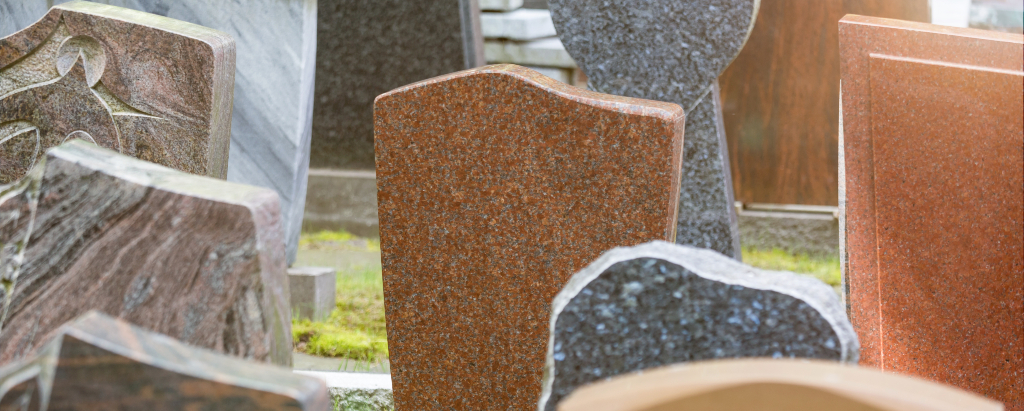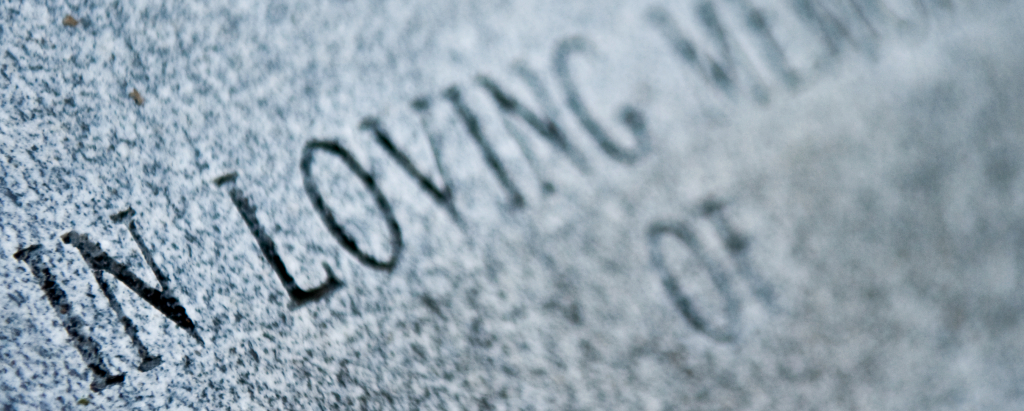
A memorial headstone is an opportunity to remember a loved one and commemorate their life. Not only does a headstone provide a tangible reminder of the person who has died, it also becomes a marker for loved ones to visit and honour their memory.
If you’re not sure where to start when choosing a headstone for your loved one, read our guide.
What types of headstones are there?
Memorial headstones come in all shapes and sizes. Which type you choose is personal to you. Here are some examples of the options available when it comes to memorial headstones:
- Flat markers. These flat headstones are laid on the ground. Typically, they are made of bronze or granite.
- Bevel markers. Like a flat marker, these lay on top of the earth. However, with bevel markers, the back is positioned more upright than the front, giving them a propped-up look. They’re also called pillow markers.
- Slant markers. Usually positioned on a concrete base, these are installed in an upright position.
- Upright headstones. This popular design is an upright tablet structure. As long as they meet cemetery regulations, upright headstones can be any shape, size and design.
- Ledger markers. A slab of stone covering one or more burial plots. These can be up to eight inches thick.

What are the options for headstone materials?
There are a few different options available for headstones, all of them suited to different tastes. One thing the materials do have in common is their durability. Here are the materials most commonly used for grave markers and headstones, and their different qualities:
- Marble – considered to be naturally beautiful due to its smooth and shiny surface, white marble is a popular material for memorial headstones. Although white marble is perfectly acceptable in the majority of cemeteries, some churchyards don’t allow it.
- Granite – known for being tough and durable, granite headstones are extremely popular. It also comes in a variety of colours and finishes to suit different tastes. Typically, only non-polished granite is allowed in churchyards
- Sandstone – this natural-looking material can be used in both churchyards and cemeteries.
- Slate – like marble, slate is easy to carve. It can be used in both churchyards and cemeteries.
- Limestone – different types of limestone can be found around the UK, though the material is not as durable as granite or marble. Most churchyards and cemeteries allow limestone
Bear in mind that different burial grounds and cemeteries will have their own rules and regulations for memorials. These will be in relation to size, shape, and material of the memorial. Speak to your funeral director about what the regulations are.
What do different headstones cost?
The cost of different headstones will vary depending on several factors including size, shape, and material used. Speak to your funeral director for a more accurate quote, but here’s a rough idea of pricing structure that you could take a look at ahead of choosing a headstone:
Granite – £
Marble – ££
Limestone – ££
Sandstone – ££
Slate – £££

What should be written on a headstone?
First and foremost, a tombstone will usually contain information about the person who has died: their name, date of birth, and the date they died.
Deciding on the rest of the headstone inscription requires a little more thought. Often, people choose to include a short quote or saying, which is called an epitaph. When choosing an epitaph, consider the following:
- Keep it short and concise – space is limited to just a few lines.
- Think about the voice – whose perspective will the epitaph be written from? It could be the person who has died, a family member, or a friend.
- Be respectful – these words will remain on your loved ones memorial well into the future, so try and ensure that they are an accurate representation.
- Make it timeless – these words will be there forever, so they need to have longevity.
If you’d like any help or advice, please feel free to get in touch with our friendly team here at E Gill & Sons Funeral Directors and they would be happy to discuss the options with you.